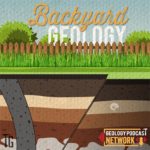
Episode summary introduction: In this episode of Backyard Geology, Chris explores one of the most highly sought-after precious gemstones – diamonds! Diamonds are most well-known for their role in engagements, but do you know where they come from or how they are made? Chris will discuss the geology behind the creation of diamonds, how they make it to Earth’s surface and the process of diamond mining. He will even divulge a place in the United States where finding your own diamond is possible!
Resources mentioned in this episode:
- Diamonds and plate tectonics
https://science.sciencemag.org/content/333/6041/434.abstract
- Ascent rate of kimberlites:
https://www.sciencedirect.com/science/article/abs/pii/S0016703708001725
- “Accralate” Kevin MacLeod (incompetech.com)
Licensed under Creative Commons: By Attribution 4.0 License http://creativecommons.org/licenses/b…
Music promoted by The Free Cat: http://tiny.cc/50cnpz
- “Whimsy Groove” Kevin MacLeod (incompetech.com)
Licensed under Creative Commons: By Attribution 4.0 License http://creativecommons.org/licenses/b…
Music promoted by The Free Cat: http://tiny.cc/50cnpz
- Safari by Peter Rockey
Music promoted by The Free Cat: http://tiny.cc/50cnpz
Host Information:
Dr. Chris Spencer is a professor of geology at Queen’s University in Kingston, ON and the founder of Traveling Geologist. His research utilizes igneous petrology, geochemistry, and geochronology to understand orogenic processes and the geologic history of the Earth. He spends as much time as he can outdoors doing fieldwork, spending time with family, and exploring the natural world. As a member of the Geology Podcast Network, he promotes earth science education and enjoys sharing his passion for the Earth with others. Chris can be found on Instagram @travelinggeologist, on Twitter @travelinggeolog and on Facebook @TravelingGeologist
![]() This work is licensed under a Creative Commons Attribution-NonCommercial-ShareAlike 4.0 International License.
This work is licensed under a Creative Commons Attribution-NonCommercial-ShareAlike 4.0 International License.
